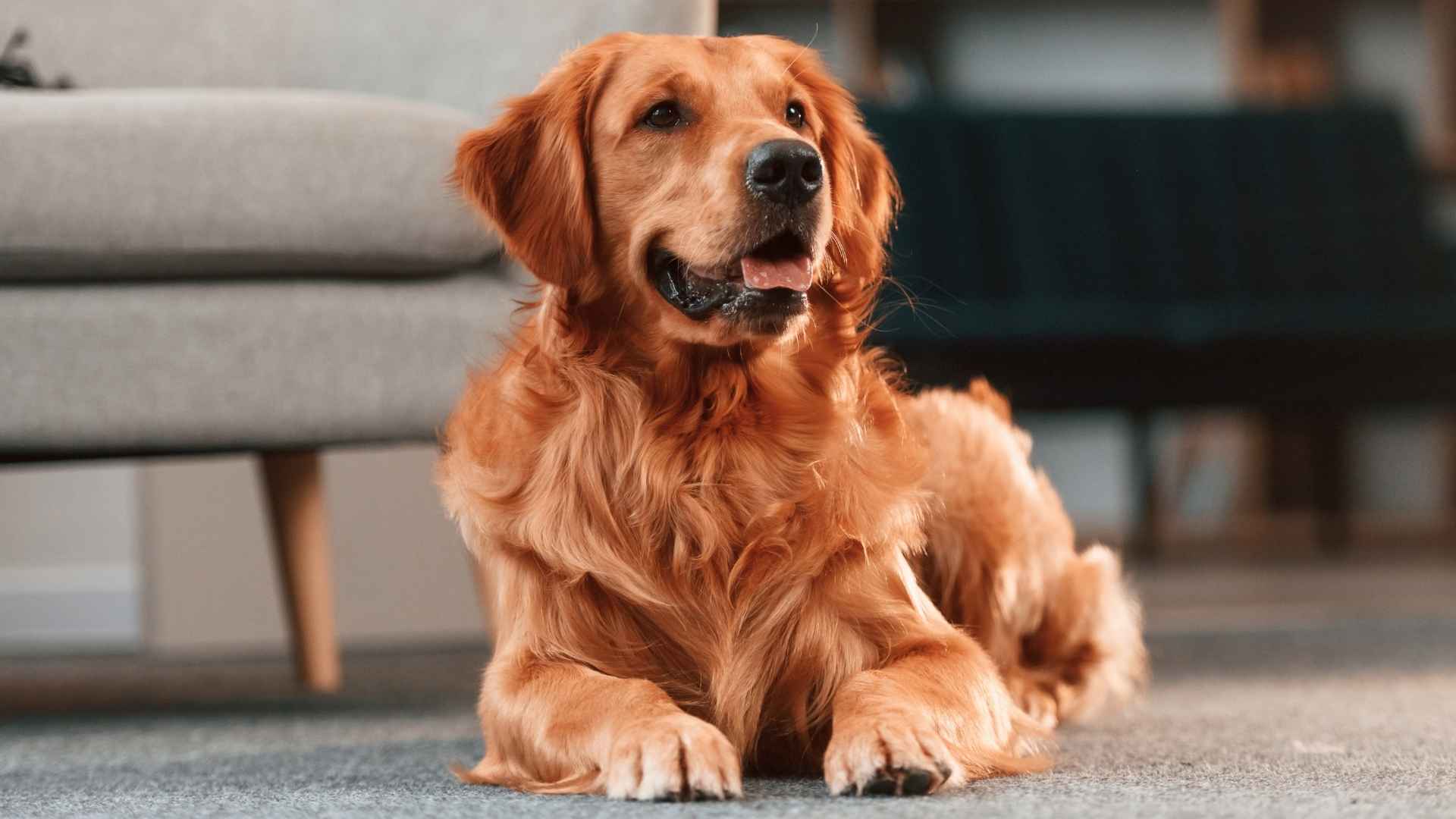Apartment life might come with its quirks—tight hallways, shared walls, and maybe a nosy neighbor or two—but that doesn’t mean you can’t have a sharp-eared, tail-wagging sidekick by your side! If you’re someone who values both cuddles and a little extra security, Alert and apartment-friendly dog breeds might be your perfect match.
These pups may be small in size, but they’ve got big personalities and even bigger protective instincts. While some breeds are content snoozing all day, others have a natural knack for keeping an eye (and ear!) on their surroundings. Whether you’re living on the top floor or in a cozy studio, there’s a loyal little watchdog out there for you.
With the right mix of love, training, and daily walks, even the most alert dog can thrive in a city setting. Ready to meet the pint-sized protectors who make perfect apartment companions? Let’s sniff out the best of the bunch!
Alert Apartment Dog Breeds
1. Dachshund

Famously known as the “hot dog” or “wiener dog,” the Dachshund is instantly recognizable thanks to its long body, short legs, and signature floppy ears. But don’t let their small size fool you—these little dynamos are bursting with personality!
Originally bred in 18th-century Germany to hunt badgers (yes, badgers!), their name literally translates to “badger dog.” Brave, tenacious, and full of spunk, Doxies bring a terrier-like drive wrapped up in a hound’s curiosity.
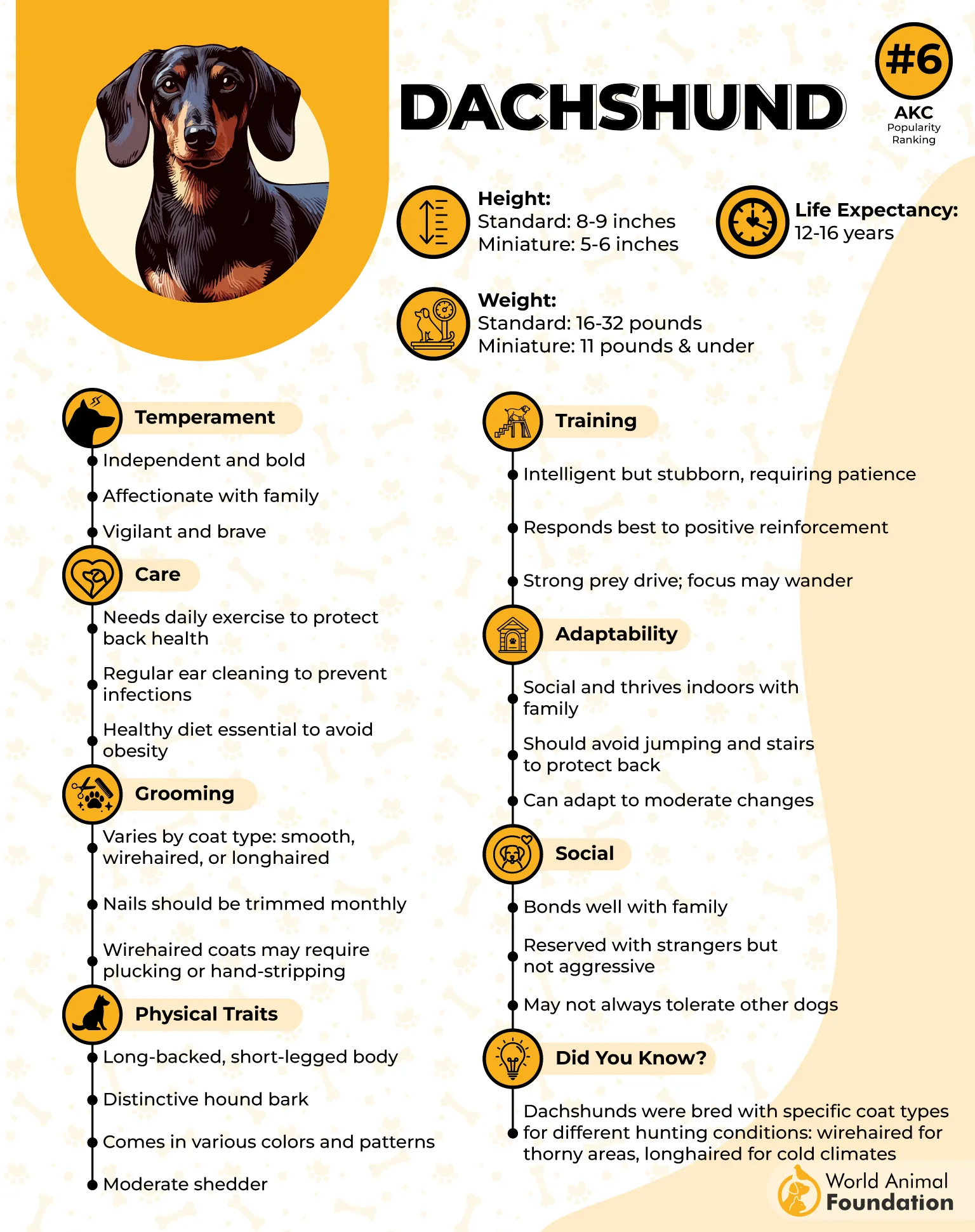
Dachshunds are fiercely loyal to their people and often a bit standoffish with strangers. Their alert nature makes them excellent watchdogs, and they’re not shy about voicing their opinion—sometimes a bit too much!

While they might dream of being big-time protectors, their bark is definitely bigger than their bite. That said, their devotion and playful energy make them wonderful companions, perfect for small apartments.
Apartment life can suit a Dachshund well, thanks to their compact build and moderate exercise needs. But be prepared for some sass—they’re independent thinkers who enjoy puzzle toys and scent games to stay mentally sharp.
Britannica states their long backs are prone to injury, so it’s best to avoid too much jumping or rough play. They’re best matched with gentle older kids and should be socialized early to get along with other pets. With the right care and plenty of snuggles, a Dachshund makes a loyal, lively roommate you’ll never get bored of!
2. Boxer
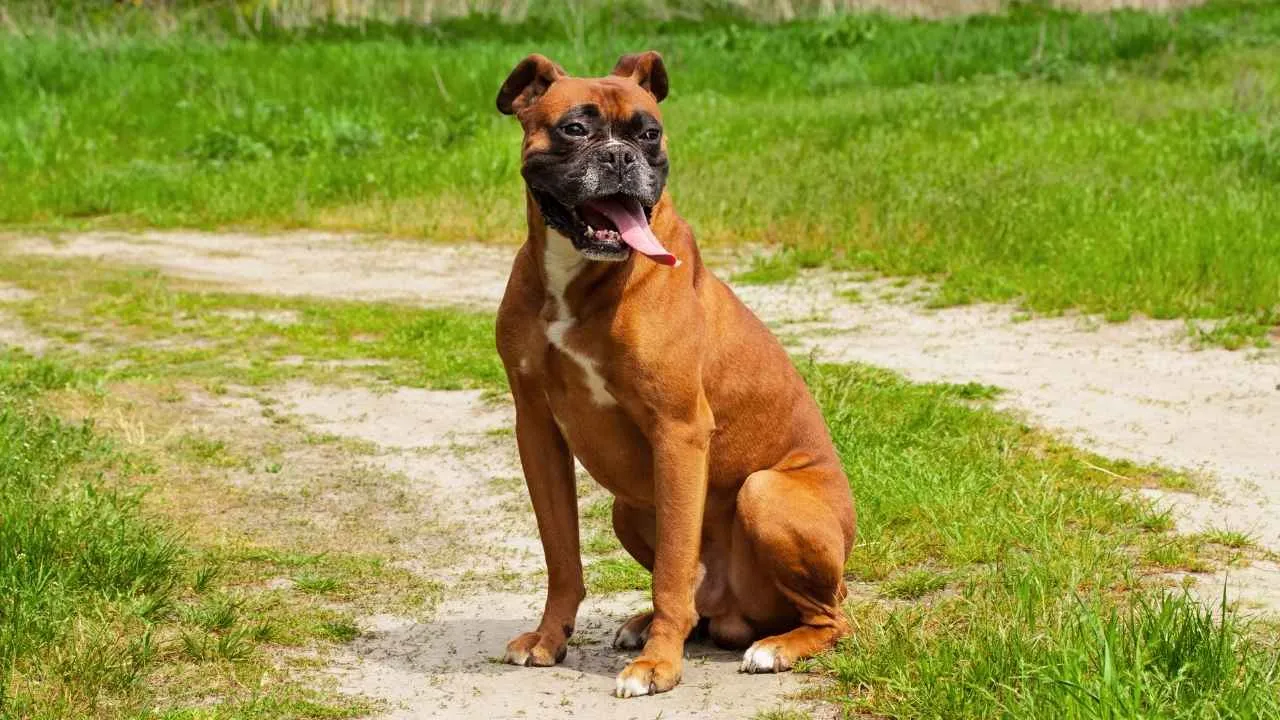
Don’t let the serious face fool you—Boxers are big-hearted goofballs wrapped in muscle! Originally bred in Germany with ancestors who hunted wild boar and even bison (yes, they’re that brave), Boxers bring bold energy, brains, and an unexpected amount of love.
With Bulldog and Great Dane in their lineage, they’ve got the looks and the legacy. But what really makes Boxers shine today is their loyalty, intelligence, and larger-than-life personality.
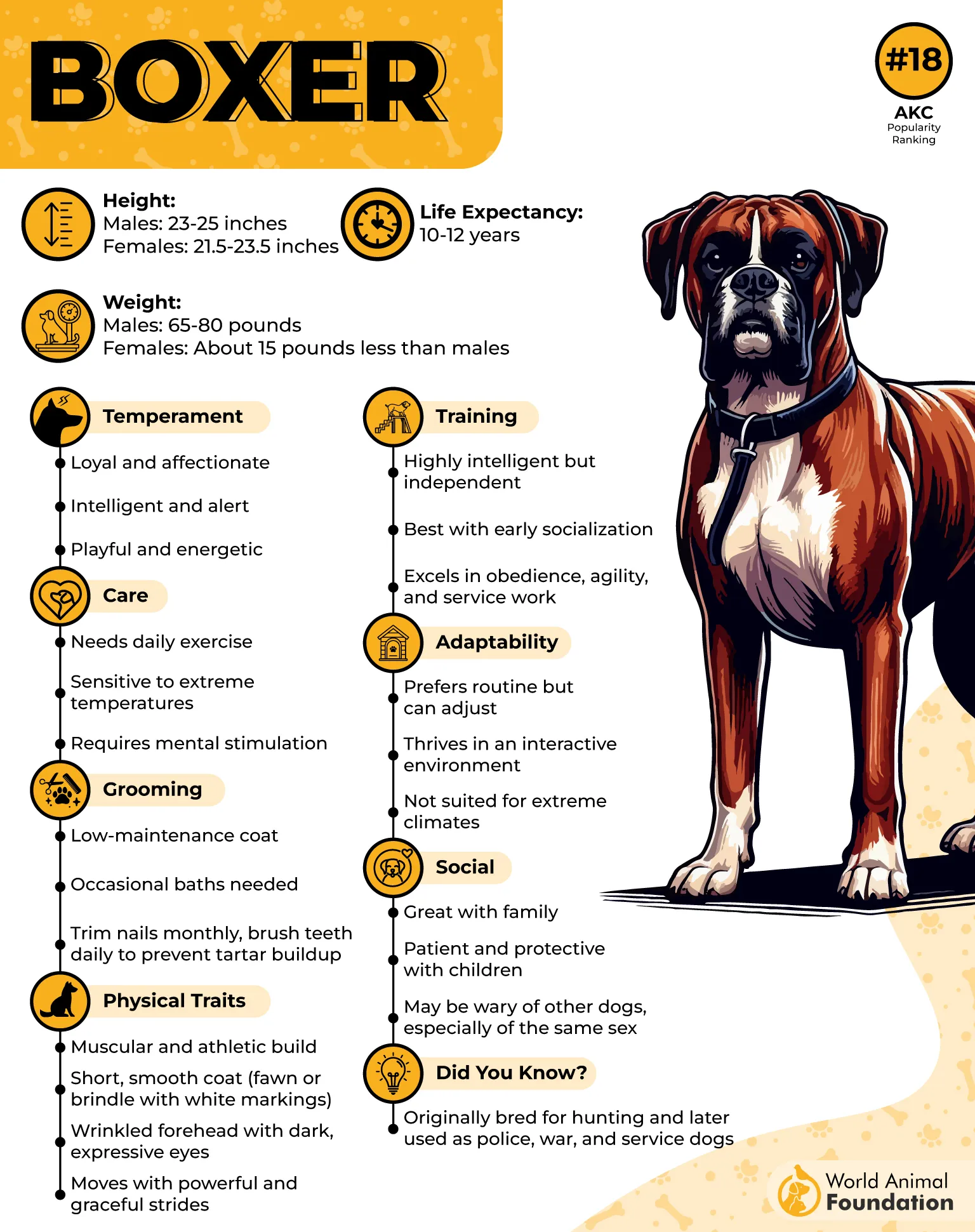
Boxers are bundles of enthusiasm who love to play hard and cuddle harder. They’re especially devoted to their families and thrive when included in daily life. While they may look intimidating at first glance, they’re actually gentle, affectionate, and a little goofy once you get to know them.

PDSA states that their strength and boisterous nature might be a bit much for very small kids or frail seniors. Give them a job to do—or at least a good game of fetch—and you’ll have one happy pup!
Apartment living with a Boxer? Totally doable—as long as you’re up for regular exercise and some serious Zoomie sessions. These pups need physical and mental stimulation, so regular walks and plenty of playtime are non-negotiable. Thankfully, they don’t bark much unless something really grabs their attention, which makes them great neighbors.
With proper training, Boxers are polite, quiet housemates who’ll happily keep an eye out without causing a ruckus. Just be sure they’re not left alone too long—they crave connection and would much rather be on the couch with you than outside by themselves.
3. Greyhounds
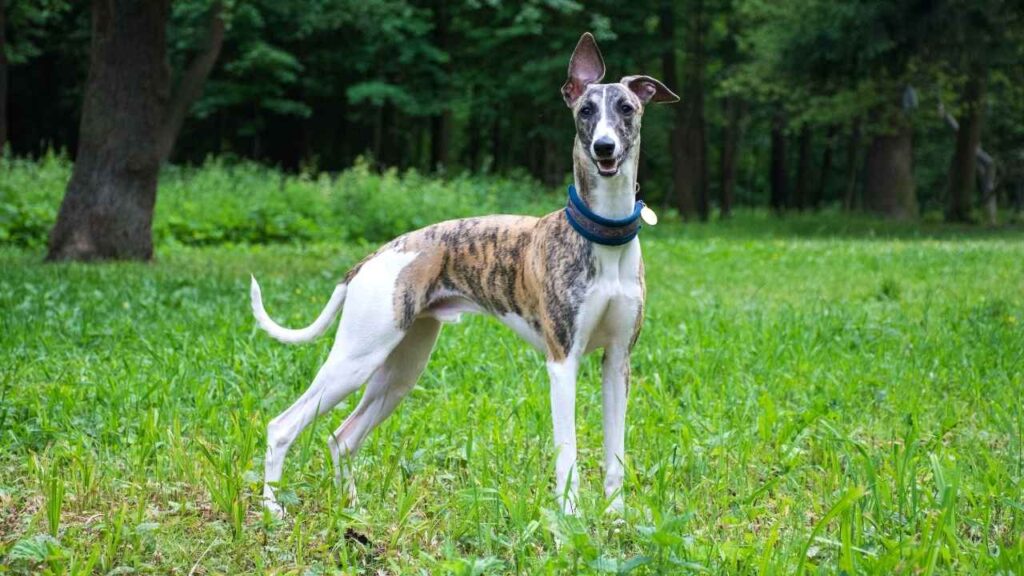
With their sleek bodies, long legs, and aerodynamic heads, Greyhounds are the supermodels of the dog world—and the fastest! These graceful sprinters can hit speeds of up to 45 mph, originally bred for hunting by sight rather than scent.
But despite their lightning-fast legs, Greyhounds are surprisingly chill. In fact, they’ve earned the nickname “40-mph couch potatoes,” and it couldn’t be more accurate.

Don’t be fooled by their racing past—these dogs are calm, quiet, and often happiest curled up on a comfy bed. Greyhounds do well in apartments as long as they get a bit of daily exercise. A couple of short walks and the occasional sprint in a safe, enclosed area will keep them feeling content.
Just a heads-up: never let them off-leash in an open space—they’re prey-driven and will chase after squirrels like they’ve got tickets to a greyhound derby!
Their short, smooth coats are a dream to maintain—low shedding, little odor, and just a quick brush every now and then. But because they lack body fat, Greyhounds are sensitive to cold weather. So yes, your pup might need a sweater in winter—and trust us, they’ll look fabulous in it. Keep up with nail trimming, ear checks, and brushing those pearly whites a few times a week for overall health.
Greyhounds are gentle, sensitive, and affectionate dogs. While they can be shy at first, early socialization builds their confidence. They’re great with children and tend to be quiet, making them ideal apartment dogs. Just be mindful of smaller pets, as their prey drive can surface. Positive reinforcement training helps them adapt smoothly to urban living.
4. Clumber Spaniel
Meet the Clumber Spaniel—a noble pup with roots as royal as their expression! Originating in 18th-century England and named after Clumber Park (fancy, right?), these chunky charmers were bred by aristocrats to track and retrieve game.
Clumber Spaniels are built like the doggy version of a tank—solid, sturdy, and packed with charm. Males typically weigh 70–85 pounds, while females come in around 55–70. While they’re not tiny lap dogs, they’re surprisingly well-suited to apartment settings—just make sure they have enough space to stretch their stubby legs and sprawl out for a good nap.
Energy-wise, these pups are pretty mellow. They won’t bounce off your walls, but they do need daily strolls or a fun indoor play session to stay trim and cheerful. Keep an eye on their treats, though—Clumbers can pack on pounds faster than you can say “snack.”
One big plus for apartment dwellers? They’re generally quiet and not prone to barking their heads off—perfect if you’ve got neighbors nearby. Still, if boredom strikes, they might let out a grumble or two, so keep them mentally stimulated with toys or training games.
Speaking of training, Clumber Spaniels are smart cookies and respond beautifully to positive reinforcement. A little patience, a few treats, and they’ll be your polite, well-mannered roommate in no time. Their affectionate and calm nature makes them a delight around kids and a favorite for families.
Their fluffy white coat with lemon or orange markings gives them that signature teddy bear look, but it does need a bit of upkeep and regular grooming. Regular brushing helps manage shedding and keeps them looking as dapper as they feel.
5. Labrador Retriever
Let’s talk about the Labrador Retriever—possibly the happiest, goofiest, most lovable canine companion. Originally bred in Newfoundland as duck retrievers, these water-loving dogs found their true calling once they made it to England in the 1800s.
There, they were fine-tuned for game hunting and fieldwork, quickly becoming legends in waterfowl and upland game retrieving. Today, they’re still champions in hunting trials and field tests, but their talents don’t stop there.
Labs are the ultimate team players. With a heart full of loyalty and a brain wired for problem-solving, they shine in just about any role. From guiding the visually impaired to sniffing out contraband at airports, these dogs are up for anything. Need a therapy dog? A search-and-rescue hero? A best friend who doubles as a cuddle therapist? The Labrador says, “Yes, please!”

They’re also impressively alert, often giving a friendly bark when something’s not quite right, making them decent watchdogs, even if they’re more tail wags than teeth. They are highly intelligent and eager to learn, which makes training a breeze, especially when treats are involved (and let’s be honest, Labs are serious snack enthusiasts).
Now, let’s get real about keeping a Lab in an apartment. Can it be done? Absolutely. Will it require some effort? You bet. Labs are active and energetic, so daily walks, regular fetch sessions, and plenty of interactive toys are must-haves. Nearby dog park or dog-friendly green spaces are perfect for helping them stretch those strong legs.
As noted by Purina, Labs want to please, so consistent, positive reinforcement works wonders. A well-trained Lab equals a calm, polite roommate—one that won’t redecorate your living room in chew marks. Early socialization helps, too, especially in shared spaces with new faces and fellow furry residents.
Though they’re big-bodied dogs, Labs can adapt to smaller living spaces if they’ve got a cozy corner to call their own. Set up a comfy spot with their bed, toys, and maybe a blanket they can claim as their throne. Just make sure they’re not left out of the family fun—Labs thrive on love, attention, and lots of belly rubs.
6. Golden Retriever
Golden Retrievers—just hearing the name probably brings a smile to your face, and with good reason. These sunny pups hail from the Scottish Highlands, where they were originally bred for retrieving game during hunts. But don’t let their history fool you—these golden-coated charmers are just as happy playing fetch in the backyard as they are curling up with their humans on the couch.
With their expressive eyes, ever-wagging tails, and genuine love for people, it’s no wonder Golden Retrievers are one of America’s favorite breeds. They’re famously gentle with kids, respectful of seniors, and quick to become best friends with everyone in between.
Now, can you raise a Golden in an apartment? You bet—but let’s be honest, you’ll need to stay on top of their energy. These dogs weren’t designed to be couch ornaments 24/7. They need outlets, and luckily, there are tons of creative ways to help them burn off steam even in smaller spaces.
Puzzle toys like frozen Kongs are lifesavers for keeping your Golden mentally sharp and happily tired. Training sessions add a fun brain workout, while off-leash play at a fenced park helps burn energy. Playdates with dog pals can turn your lively retriever into a sleepy cuddle bug, and doggy daycare is perfect for busy days.
Goldens do shed quite a bit, so regular brushing and vacuuming are musts. They also thrive on companionship and don’t like being left alone for long. If you want a loyal, playful sidekick who’s always up for fun and snuggles, a Golden is the perfect match.
7. French Bulldog
Say Bonjour to the French Bulldog! With their bat-like ears, squishy faces, and big personalities packed into compact bodies, Frenchies are pure charm. Bred in late 1800s France from small native dogs and toy Bulldogs, these little guys are now beloved couch companions. Despite their grumpy looks, they’re joyful, affectionate, and just a tad mischievous.
French Bulldogs thrive in city life. They don’t need much space and love chilling with their humans. A couple of short brisk walks and some playtime usually keep them happy and healthy. But beware—heat is their enemy. Their flat faces make them prone to overheating, so keep summer outings brief and during cooler hours. If you have air conditioning, your Frenchie is already set.
These small dogs are playful goofballs with hearts of gold. They can be a bit stubborn, but with patience and treats, training is doable. They’re great with kids who respect their limits and generally polite with strangers and other dogs—no wild enthusiasm here, just calm friendliness.
Grooming is a breeze thanks to their short coat, which only needs occasional brushing to manage shedding. They rarely bark much but are famous for snorts, snores, and wheezes—adorable quirks that sometimes hint at breathing issues. Regular vet visits are key to keeping them comfortable.
Frenchies do come with special health needs. Many are born via C-section, and they’re prone to hip dysplasia and brachycephalic obstructive airway syndrome (BOAS). If surgery is needed, make sure your vet knows brachycephalic breeds well, since anesthesia can be tricky. A little extra care helps these sturdy little pals thrive.
If you work from home, get ready for a constant shadow—your Frenchie will want to be wherever you are. Their small size hides a huge heart full of loyalty and silliness. Yes, they’re mischievous and loud snorers, but they’re absolutely worth every bit of the love and laughter they bring.
Conclusion
Choosing the right dog breed for an apartment lifestyle means balancing personality, size, and care needs. Small dog breeds like the Cavalier King Charles Spaniel, Australian Terrier, Shih Tzu, Bichon Frise, and Italian Greyhound often top the list of the best dog breeds for city life thanks to their adaptability and affectionate nature.
While breeds such as the Pug (or Pugs) and Chihuahua bring charm and companionship, owners should be mindful of challenges like separation anxiety and grooming demands, especially with breeds sporting luxurious or silky coats like the Standard Poodle.
Most dogs can thrive in apartments when owners spend quality time and provide mental and physical stimulation. Whether you’re welcoming a lively puppy or a calm companion, exploring the qualities of other breeds can help ensure you find one of the best dogs perfectly suited to your lifestyle and home.


